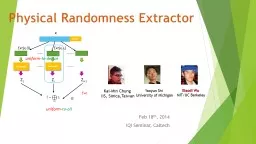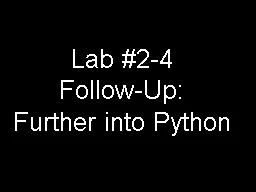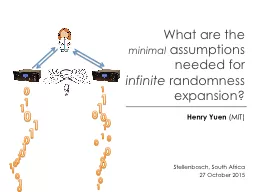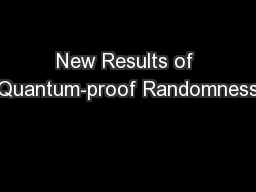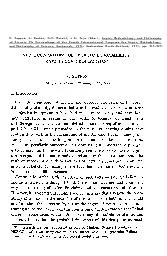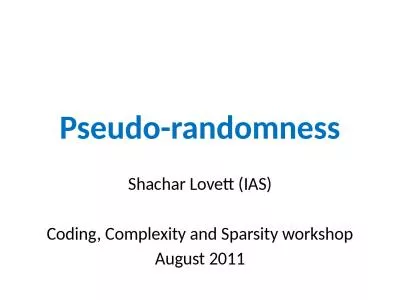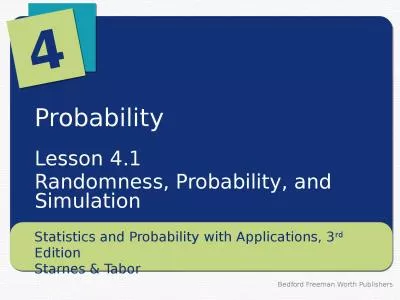PPT-Physical Randomness Extractor
Author : lindy-dunigan | Published Date : 2018-11-06
Feb 18 th 2014 IQI Seminar Caltech KaiMin Chung IIS SinicaTaiwan Yaoyun Shi University of Michigan Xiaodi Wu MITUC Berkeley device Ext xs i Extx0 Decouple
Presentation Embed Code
Download Presentation
Download Presentation The PPT/PDF document "Physical Randomness Extractor" is the property of its rightful owner. Permission is granted to download and print the materials on this website for personal, non-commercial use only, and to display it on your personal computer provided you do not modify the materials and that you retain all copyright notices contained in the materials. By downloading content from our website, you accept the terms of this agreement.
Physical Randomness Extractor: Transcript
Download Rules Of Document
"Physical Randomness Extractor"The content belongs to its owner. You may download and print it for personal use, without modification, and keep all copyright notices. By downloading, you agree to these terms.
Related Documents

